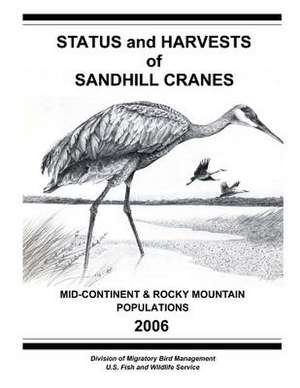Status and Harvests of Sandhill Cranes
Autor David E. Sharp, Kammie L. Kruse, James a. Dubovskyen Limba Engleză Paperback
Preț: 93.60 lei
Nou
Puncte Express: 140
Preț estimativ în valută:
17.91€ • 19.15$ • 14.93£
17.91€ • 19.15$ • 14.93£
Carte disponibilă
Livrare economică 27 martie-10 aprilie
Preluare comenzi: 021 569.72.76
Specificații
ISBN-13: 9781479147922
ISBN-10: 1479147923
Pagini: 34
Dimensiuni: 216 x 280 x 2 mm
Greutate: 0.1 kg
Editura: CREATESPACE
ISBN-10: 1479147923
Pagini: 34
Dimensiuni: 216 x 280 x 2 mm
Greutate: 0.1 kg
Editura: CREATESPACE
